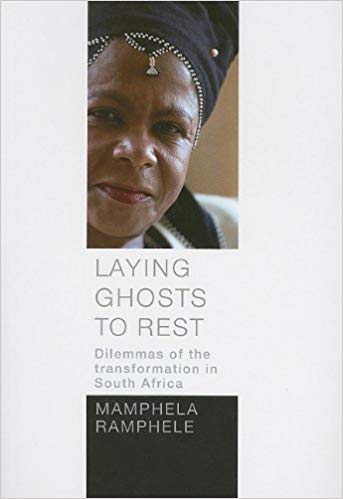Laying Ghosts to Rest Summary

3 min read ⌚

South Afrika’s only way to change is “Laying Ghosts to Rest”.
About Mamphela Ramphele

Mamphela Ramphele is an author, the former vice chancellor of the University of Cape Town, the former managing director of the World Bank and is a chairman of Circle Capital Ventures in South Africa.
“Laying Ghosts to Rest Summary”
In 1994, by inaugurating Nelson Mandela as president, South Africa moved to a democratic government and began its “political, economic and social transformation.”
This “rebirth” was an enormous experiment in creating a new order in the country, which was built on egalitarian principles and rights.
Its task was not only to change the ways institutions were functioning and rewrite the laws but to also heal the emotional and spiritual scars of its citizens.
The country did not receive any help, so it had to embark on this journey alone.
In 1910, the Union of South Africa ended Britain’s governance and secured self-rule, with which modern South Africa was launched.
Having been under years of repressions, white Afrikaners became the “oppressors of others weaker than themselves” by creating policies that defined people and the opportunities they had access to according to race.
Decades of resistance by domestic opponents of the regime and exile followed in which “no fewer than 30,000 people died in the anti-apartheid struggle that had all the hallmarks of a civil war.”
Nelson Mandela, then in prison, negotiated the ending of the white rule while he was still inside. Although he had spent years in jail, he was intelligent and wise, and he wanted to use new tactics to tackle the problem.
What did he do?
He charmed the Afrikaners into respecting him.
So, when he became the president in 1994, it is understandable why everyone believed he is just what the country needs.
In 1996 in London the Truth and Reconciliation Commission (TRC) was established in order to create a united country where black and white people would be comfortable.
Black majority was not to be denied all opportunities, and the white minority was not to be nervous about the future.
Following that establishment, whites and backs admitted to committing political, economic and social violations.
However, South Afrika has suffered years and years of racism, sexism and ethnic chauvinism, so battling them is far from an easy task.
Key Lessons from “Laying Ghosts to Rest”
- Overcoming Racism
- Ethnic Chauvinism
- Sexist Customs that Hinder Equality
Overcoming Racism
Overcoming racism is difficult.
Breaking down these barriers has to begin with oneself: with confronting self-image.
The lack of genuine personal connection with the other race is responsible for the continuance of stereotypes that exist between both sides.
Ethnic Chauvinism
Tribalism is usually a positive force that helps the creation of cultural unity. However, in a situation where Africans were pushed to safeguard their identity because the colonizers’ separated native
people into “more manageable ethnic units,” it is far from it.
Sexist Customs that Hinder Equality
- The “levirate” makes a widow wed one of her late husband’s relatives.
- The “sororate” makes a woman have kids for an infertile older sister.
- “Polygony,” or the practice of plural marriage.
- “Child betrothal and forced marriages” to cover for familial debts.
- Inheritance rules that distribute assets only among male family members.The treatment of women as minors, the ban on female land ownership and economic decision making.
- “Lobola or bohadi” allows families to exchange women for cattle and vice versa.
Like this summary? We’d Like to invite you to download our free 12 min app, for more amazing summaries and audiobooks.
“Laying Ghosts to Rest” Quotes
The leap of faith required to fully embrace our ugly past in order to transform it is often underestimated. Share on X Our transition to democracy is anything but a miracle. The tree of freedom…was nourished by the blood of many martyrs over the years of struggle. Share on X What stands out about Mandela’s leadership style during the first years of our transition is his ability to make people feel that with him around, everything is possible. Share on X The constant humiliation of people over generations through the assigning of negative value to everything that they held dear has inevitably left deep psychological scars. Share on X South Africa is but a teenager in democracy terms. Share on X







